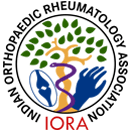

Editorial Process
Editorial Process
The manuscripts will be reviewed for possible publication with the understanding that they are being submitted to one journal at a time and have not been published, simultaneously submitted or already accepted for publication elsewhere. On average, 45-60% of the manuscripts are being rejected by the editorial office before a formal peer-review.
The Editorial office review all submitted manuscripts initially. Manuscripts with insufficient originality, serious scientific and technical flaws or lack of a significant message are rejected. All manuscripts received are duly acknowledged. Manuscripts are sent to two or more expert reviewers without revealing the identity of the contributors to the reviewers. Each manuscript is also assigned to a member of the editorial team, who takes a final decision on the manuscript based on the comments from the reviewers. The contributors will be informed about the reviewers’ comments and acceptance/rejection of the manuscript. The average submission to first decision time is about 3-4 weeks and about 65-70% of unsolicited manuscripts do not get published.
Articles accepted would be copy edited for grammar, punctuation, print style, and format. Page proofs will be sent to the corresponding author, which has to be returned within three days. Correction received after that period may not be included.
Authorship Criteria
Authorship credit should be based only on substantial contributions
- Conception and design or acquisition of data or analysis and interpretation of data;
- Drafting the article or revising it critically for important intellectual content;
- Final approval of the version to be published.
Conditions 1, 2 and 3 must be met. Participation solely in the acquisition of funding or the collection of data does not justify authorship. General supervision of the research group is not sufficient for authorship. Each contributor should have participated sufficiently in the work to take public responsibility for appropriate portions of the content. The order of naming the contributors should be based on the relative contribution of the contributor towards the study and writing the manuscript. Once submitted the order cannot be changed without the written consent of all the contributors.
For a study from in a single institute, the number of contributors should not exceed seven. For a case-report, brief communication, letter to the editor and review article the number of contributors should not exceed five. A justification should be included if the number of contributors exceeds these limits. Two/three additional authors from other departments/specialties would be permissible if they have contributed significantly.
Only those who have done substantial work in a particular field can write a review article. A short summary of the work done by the contributor(s) in the field of review should accompany the manuscript. The journal expects the contributors to give post-publication updates on the subject of review. The update should be brief, covering the advances in the field after the publication of the article and should be sent as a letter to the editor, as and when major development occurs in the field.
Types of Manuscripts and Limits
Original Articles: Randomized controlled trials, intervention studied, studies of screening and diagnostic test, outcome studies, cost effectiveness analyses, case-control series, and surveys with high response rate. Up to 4000 words excluding about 45 references and abstract.
Review Articles: Systemic critical assessments of literature and data sources. Up to 4500 words excluding about 90 references and abstract. For review articles, include the method (literature search) in abstract as well as in the introduction section. Usually review articles are invited by the Editor-in-chief from people of eminence with vast personal experience in the field.
Case Reports: New/interesting/very rare case can be reported. Cases with clinical significance or implications will be given priority. However, mere reporting of a rare case is not encouraged and may not be considered. Up to 2000 words excluding references and abstract and up to 10 references.
Short Communication: Study with clinical interest or unusual presentation of a disease can be sent. Up to 1700 words and 10 references.
Image: a short history, differential diagnosis, and short discussion of classic and/or rare case. Should not be more than 800 words excluding up to ten references.
Clinic-pathology Conferences: With something to learn. Completely worked up cases with complete autopsy findings. No abstract or key words required. Autopsy findings, post-mortem investigations, histopathology features and final diagnosis with brief discussion with lessons leant to be given in a separate page of the main article text.
Announcements of conferences, meetings, courses, and other items likely to be of interest to the readers should be submitted with the name and address of the person from whom additional information can be obtained.
Special: Editorial, Guest editorial, commentary, Expert’s comments and Symposia articles are solicited by the editorial office.

